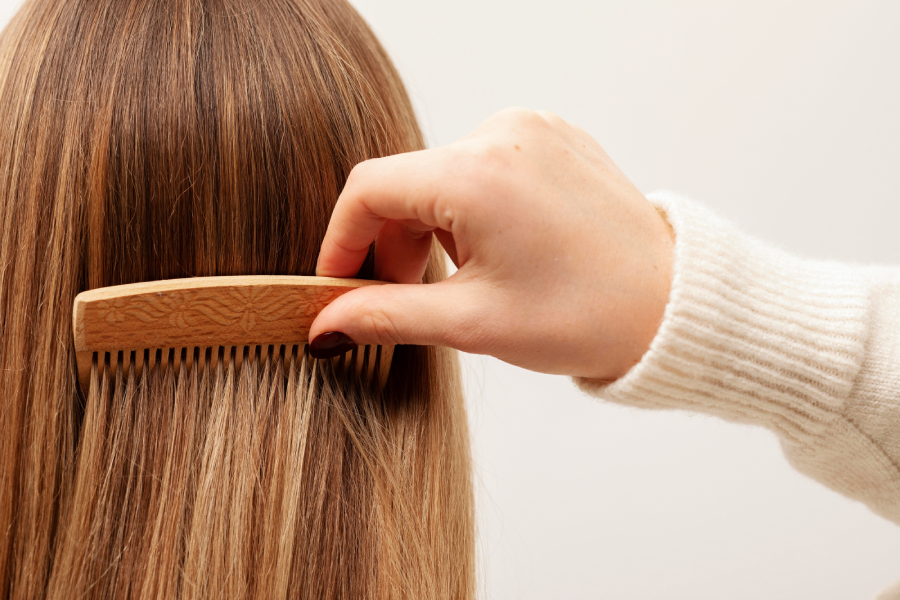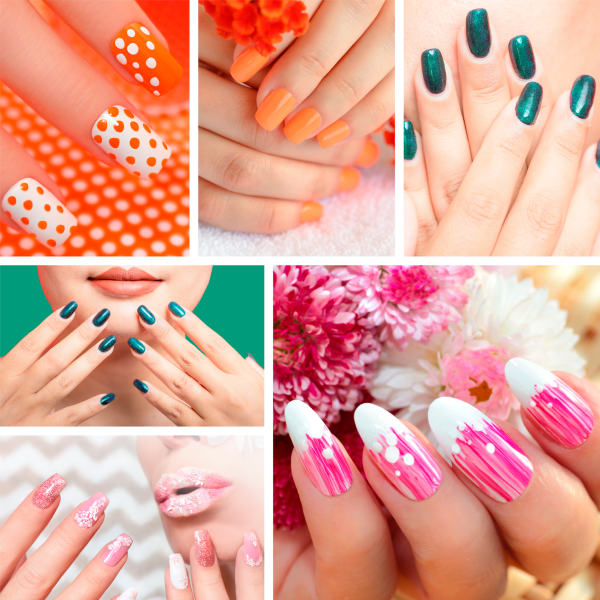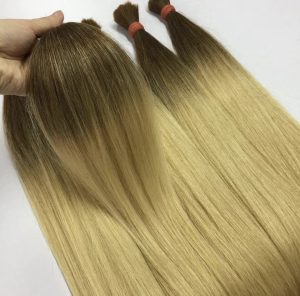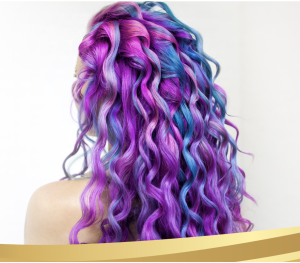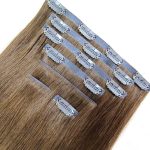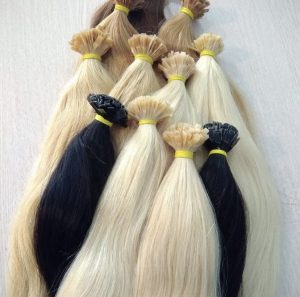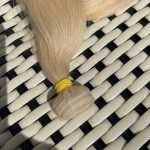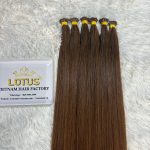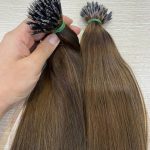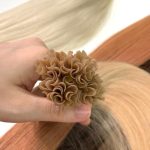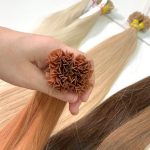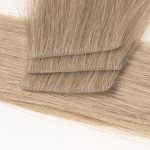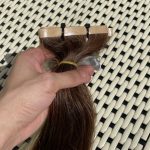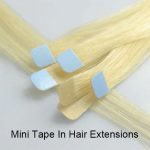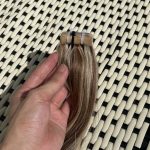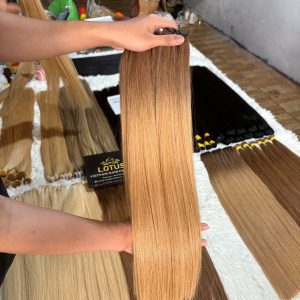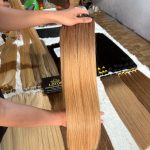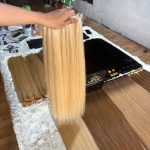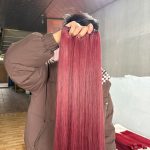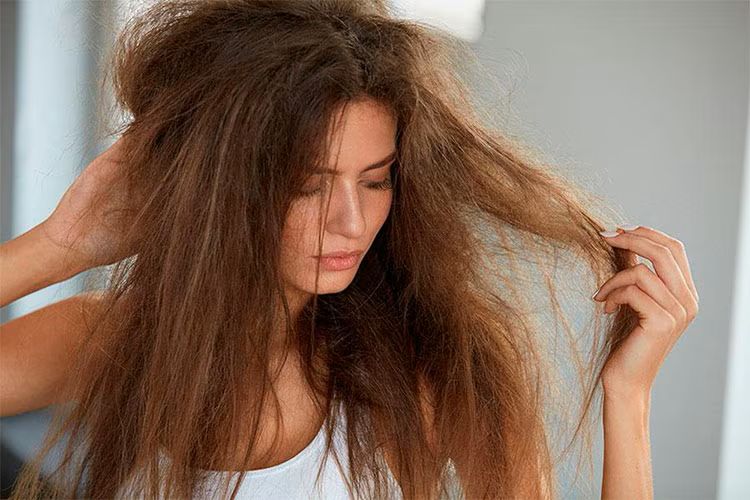Why Do Hair Extensions Get Tangled?
In the quest for beauty, many women choose hair extensions as a quick solution to achieve long, thick, and voluminous hair. However, this joy often doesn’t last long, as the extensions begin to tangle, become dry, hard to brush, and difficult to style. One of the most common questions anyone with hair extensions has asked is: “Why do hair extensions get so tangled?”
In reality, there are several reasons why hair extensions become tangled. These may include poor-quality hair, improper care, environmental conditions, or even daily habits. Unlike natural hair, extensions are no longer nourished by the scalp, making them more vulnerable, easily damaged, and requiring more meticulous care.
Let’s explore the causes of tangled hair extensions in detail and look at specific solutions to help keep your extensions smooth, soft, and long-lasting.
Why Are Hair Extensions Prone to Tangling?
We’ve all experienced the frustration of carefully styled hair becoming a tangled mess within a few hours. With hair extensions, this happens even more easily because the strands are no longer biologically connected to the body. Here are the 7 most common reasons why your extensions may tangle:
Poor-Quality Hair Extensions
The quality of the hair extensions is the most critical factor in determining whether your hair tangles easily. Cheap extensions are often made from synthetic fibers or non-Remy human hair — meaning hair collected from various sources with cuticles not aligned in the same direction. This misalignment causes the cuticles to rub against each other, leading to tangling during brushing or washing.
Even if real human hair is used, if it doesn’t match your hair structure or has been heavily chemically processed, it can lose its elasticity and natural moisture — making it prone to tangling. Low-quality hair is not only tangled but also dry, stiff, and easily damaged.
Solution: Always choose high-quality, 100% Remy human hair with intact cuticles aligned from root to tip. The closer it is to your natural hair texture, the easier it will be to maintain and the longer it will last.
Extensions That Are Too Long to Manage
Long hair may look glamorous, but it tangles more easily, especially if you often wear it down without tying or styling it neatly. When the extensions are longer than manageable, friction from clothing, movement, or pillows can cause tangling at the ends and around the nape.
Solution: Choose a hair length that suits your lifestyle. If necessary, trim the ends to reduce friction and make maintenance easier.
Not Brushing Properly or Frequently Enough
Neglecting to brush your hair regularly or using the wrong brush is a common cause of tangling. Hair extensions require more thorough brushing than natural hair because shed hair can accumulate around the bonds, forming knots and causing breakage if not removed gently.
Solution: Use a specialized hair extension brush, such as one with soft nylon bristles combined with boar bristles, which smooths the hair without loosening the bonds. Brush at least 3 times a day — after waking up, mid-day, and before bed. Always detangle before washing your hair to minimize tangling during the wash.
Dry, Windy, or Polluted Environments
Living in areas with strong winds, dry weather, or high pollution levels can quickly dehydrate hair extensions, making them dry, brittle, and tangled. This becomes worse if you’re often outdoors without protecting your hair.
Solution: Always shield your hair when outside, use a moisturizing spray, and regularly deep-condition your hair with restorative masks.
Excessive Use of Heat Styling Tools
Frequent use of blow dryers, straighteners, or curling irons at high temperatures can strip moisture and damage the hair cuticles, causing dryness and tangling. Extensions are already more fragile than natural hair, so heat damage affects them more severely.
Solution: Always use a heat protectant spray before styling, keep tools on low to medium heat, and avoid applying heat directly to the bond areas. Never sleep with wet hair, as it tangles and damages easily when damp.
Using the Wrong Hair Products
Many people choose shampoo, conditioner, and hair masks based on trends or guesswork, not considering their hair or extensions’ specific needs. This can result in improper cleansing or over-conditioning, which causes buildup and tangling.
Solution: Use products specially formulated for hair extensions or damaged hair — preferably those with high moisture content and gentle ingredients. Avoid sulfate-free shampoos if they do not cleanse your hair thoroughly.
Time to Reapply or Replace Extensions
Natural hair grows each month, gradually pulling the bonds further from the scalp. This loosens the extensions, alters their placement, and increases the chance of tangling. Waiting too long between salon visits can cause the bonds to slip, leading to frizz and matting.
Solution: Schedule regular maintenance appointments every 3–6 weeks depending on your extension type, to keep your hair neat and manageable.
How to Prevent Tangling and Keep Extensions Beautiful for Longer
After understanding the causes of tangling, here are essential tips to keep your extensions soft, sleek, and full of life:
Choose Premium-Quality Hair Extensions
Use 100% pure, untreated Remy human hair with aligned cuticles. Always consult a professional stylist to select the right extension method (keratin, tape-in, nano rings, etc.) to minimize damage to your natural hair.
Style Gently and Properly
-
Never sleep with wet hair.
-
Always dry the roots completely and braid your hair loosely if needed.
-
Avoid high heat and prevent tools from touching the bonds.
-
Moisturize regularly with a lightweight mist that’s free from heavy oils or silicones.
Brush Correctly and Frequently
-
Use a special extension brush.
-
Brush 3 times daily, especially before washing.
-
Gently detangle with your fingers before using a brush if you notice knots.
Use Specialized Hair Care Products
-
Use moisturizing shampoos without parabens or mineral oils.
-
Apply conditioner and masks away from the bond area to avoid slippage.
-
Avoid heavy oils or oil-based serums that may cause tangling or residue buildup.
Enhance Protection While Sleeping and Outdoors
-
Sleep on a silk or satin pillowcase to reduce friction.
-
Use soft silk ties or scrunchies to loosely secure your hair.
-
Protect your hair outdoors with a hat, scarf, or UV-protection spray.
Conclusion
Hair extensions are an art — not only in choosing the right hair and application method but also in how you love and care for them each day. Once you understand the causes of tangling, you can turn your extensions into a loyal companion that helps you feel confident and radiant in every moment.
Lotus Hair Vietnam – A Leading Manufacturer of High-Quality Hair Extensions
With over 14 years of experience, Lotus Hair Vietnam takes pride in being one of Vietnam’s leading hair extension manufacturers, specializing in providing premium Vietnamese hair to international markets. Established in 2010, we have continuously developed and strengthened our reputation worldwide, particularly in the United States and Europe.
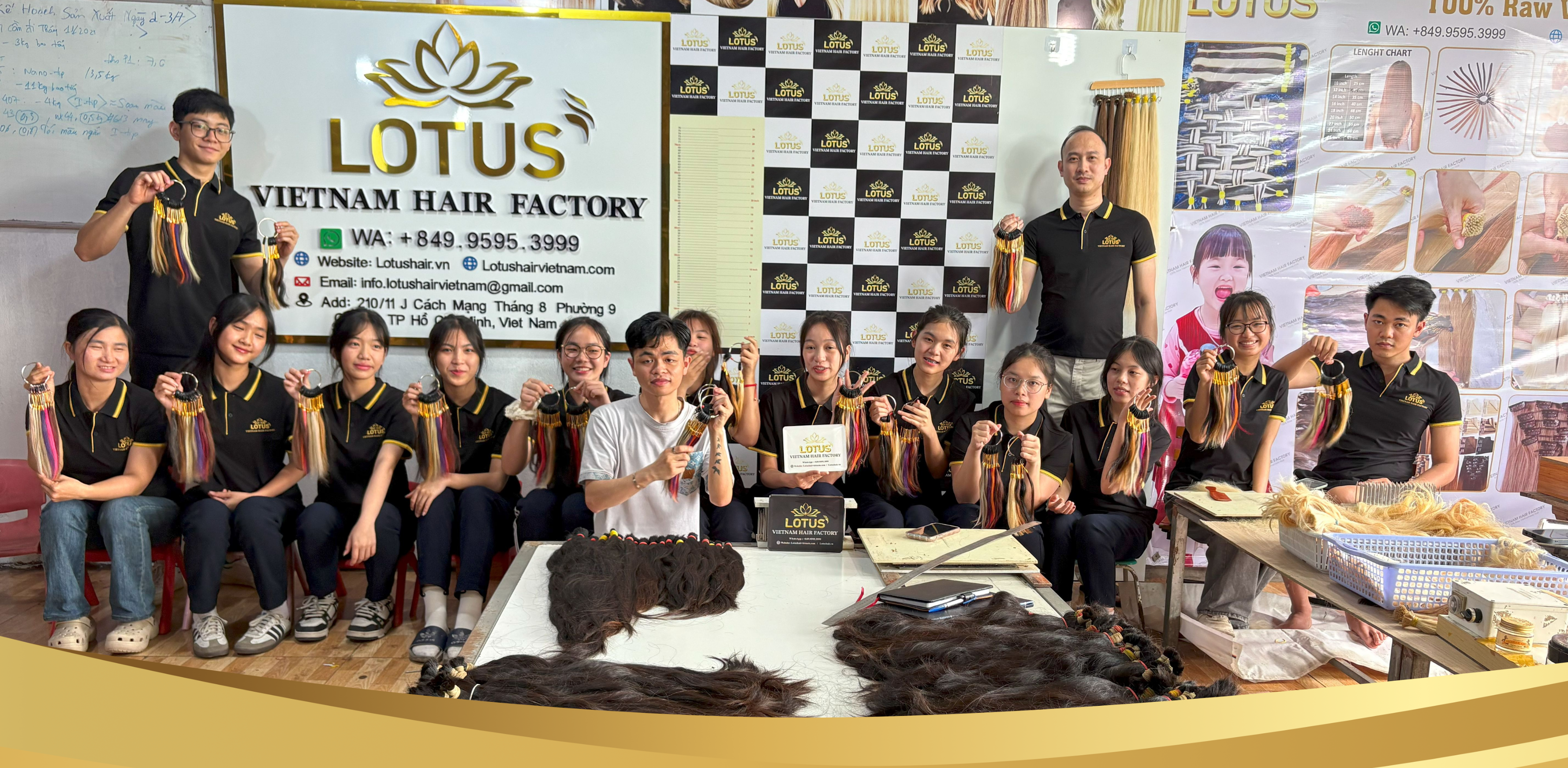
Quality is always our top priority at Lotus Hair. We are committed to delivering consistently high-quality hair products with smooth texture, natural shine, and long-lasting durability.
Every batch of hair extensions undergoes strict quality control to ensure strength, softness, and compliance with international standards—ready to conquer even the most demanding markets like the U.S. and Europe.
Whether you are a retailer, salon owner, or distributor, we offer tailored supply solutions to help you grow your business with direct-from-factory pricing and premium-quality products.
Contact us today for expert consultation and the best pricing options!
| LOTUS HAIR VIETNAM | |
| Hotline & WhatsApp | +849.9595.3999 – Ceo – Mr. Ben +849.969.01.777 – Mr. Erik +849.969.03.777 – Ms. Tina +849.969.05.777 – Ms. Vietnam +849.969.06.777 – Ms. Maria |
| Email: | [email protected] |
| Address: | 210/11J Cach Mang Thang Tam Street, Ward 9, District 3, Ho Chi Minh City, Vietnam. |


